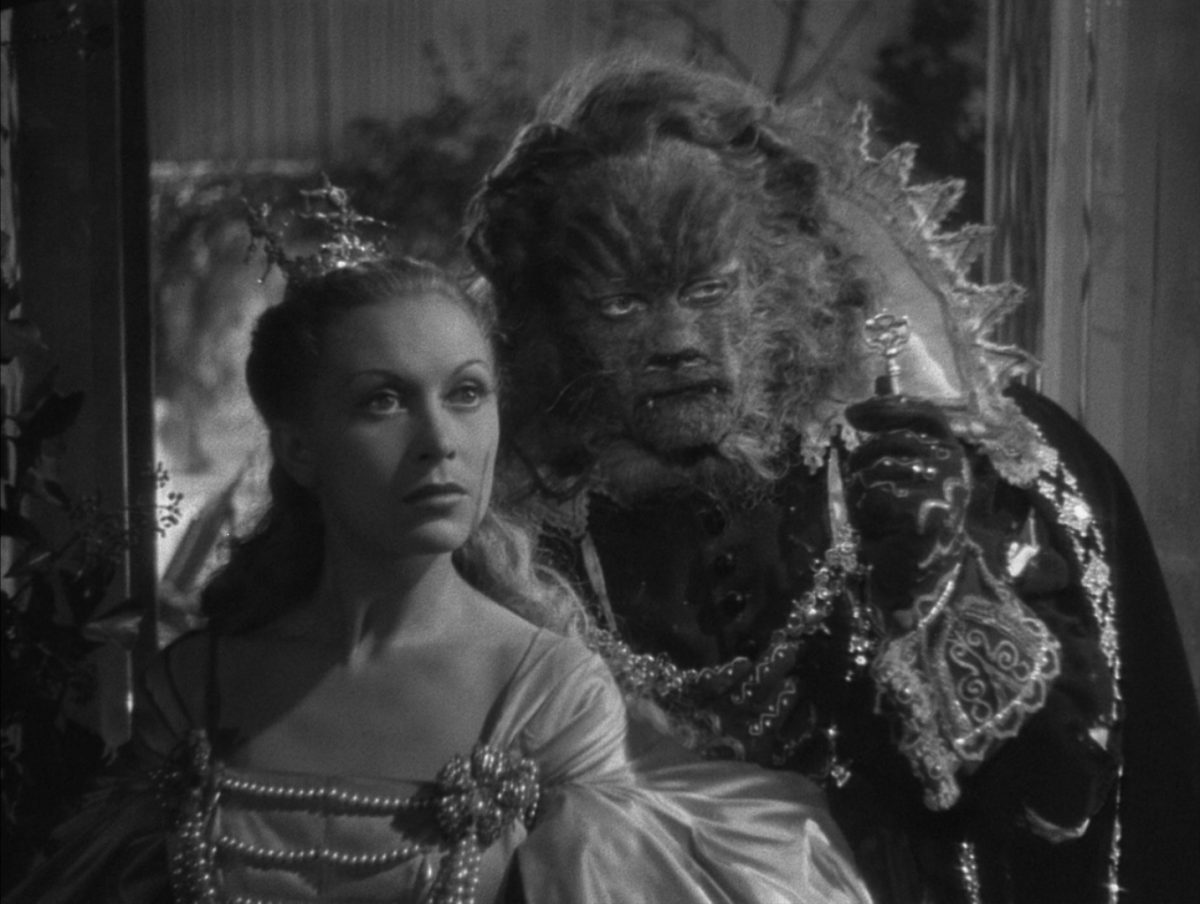Beauty And The Beast

La Belle et la Bête
Jean Cocteau, René Clément
France – 1946

Screenplay: Jean Cocteau
Cinematography: Henri Alekan
Production: DisCina
Language: French
Duration: 96 min
Color: Black and White
Synopsis: Returning home late one night after finding out that he is destitute, a merchant takes shelter in a castle. As he leaves the next morning, he plucks a single rose from the garden, and at that very moment the master appears, a hideous creature that is half man and half beast. The Beast tells the merchant that he has a choice: to die or to send over one of his three daughters to live in the castle as his companion. Of the three girls, Belle alone offers herself in exchange for her father’s life in spite of his objections. Beast assures her that she will come to no harm. They meet daily at seven in the evening, only to dine together. Every day Beast asks Belle to marry him and she politely refuses. When her father falls ill, Beast grants her leave to go home. When she returns a few days later than promised, she finds Beast dying of a broken heart. The love that has grown between them leads to a magical resolution.
Notes:
Within Jean Cocteau’s varied œuvre, we find a number of hybrid characters: the Sphinx and a centaur-like horse/man first appear in the plays “La Machine Infernale” and “Orphée” respectively and then reappear in his final film, Le Testament d’Orphée. But his most famous hybrid creature manifests itself in La Belle et la Bête: La Bête is alternatively human and animal. Animal ferocity masks la Bête’s inner beauty, much as an elaborate mask conceals the physical beauty of actor Jean Marais. La Bête, perhaps Cocteau’s best-known hybrid creation, exists in a liminal state that inspires first fear, but later affection and even love. As in the original tale, when la Bête transforms into Prince Charming, Belle is confused and perhaps even deceived; she loves the animal, not the human who appears before her.
Cocteau’s interest in the hybrid may be traced back to his earliest spectacular undertakings, from his collaboration with Massine, Picasso, and Satie to create the ballet Parade (1917) as well as the so-called satirical ballet Les Mariées de la Tour Eiffel (1921). The whimsical storylines of these ballets, both created by Cocteau, feature human performers in the roles of horse-man, ostrich, and lion. These early hybrid efforts, while brief, throw the audience off its guard and, in the case of Les Mariées de la Tour Eiffel, inspire a comic reading of the play. But the first best examples of mythic hybridism may be located in his second theatrical version of the Œdipus story, La Machine Infernale from 1934. This represents a thirteen-year gap in Cocteau’s life, as in fact he had been working on Œdipus for much longer, in a Latin adaptation of Sophocles’ Œdipe Roi that premiered in 1927 and immediately thereafter in sketches and studies that date back to 1928. At that time, Cocteau had envisioned a sort of tragi-comic prologue to Œdipus that would have focused the action entirely on a romantically-tinged relationship between Œdipus and the Sphinx, who he envisioned as a young winged girl or a singing dog. During this time, Cocteau was intimately linked to Natalie Paley, the French-born Russian princess turned top model and socialite; he used her photograph as the basis of a Sphinx character sketch. Through hybridity and physical transformation, Cocteau wrestled creatively with the quest for love, and the lack thereof. Thematically, these stories are united by the impossibility for Cocteau himself to be in a relationship that would receive society’s blessing at that particular epoch.
Notes drawn from Webster, Catherine S. “La Belle est la Bête: Cocteau’s Hybrid Human-Animals.” Contemporary French & Francophone Studies 17, no. 3 (June 2013): 258-264.


